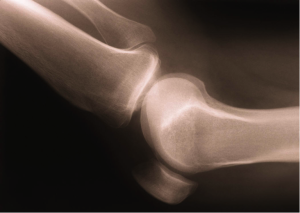Bursitis Causes
This articles has been created to assist you in your understanding of what bursitis is and how it is commonly treated.
Before moving any further into the discussion of bursitis, we need to first understand what a bursa is (pl. bursae) Bursae are fluid filled sacs lined with a synovial membrane which produce fluid. This is why when bursae are irritated (i.e. bursitis), the area around them may swell.
Bursae are often found near joints. For instance, the trochanteric bursa is located between the greater trochanter (the bony prominence at the hip) and the muscles and tendons that cross over the greater trochanter. This bursa can get irritated if the IT band is too tight, with a fall, or with changes in the way you move. This bursa is a common cause of lateral thigh (hip) pain. Two other bursa that can get inflamed around the hip are the iliopsoas bursa, located under the iliopsoas muscle and the bursa located over the ischial tuberosity (the bone you sit on).
The function of a bursa is to lessen the friction between tendon and bone, ligament and bone, tendons and ligaments, and between muscles. Inflammation or infection of the bursa is called bursitis.
Bursitis is most commonly the result of trauma, overuse, underuse, or an alteration in the biomechanics of the body (i.e. abnormal body movement).
Bursitis Symptoms
 There are many bursae all over the body – around the hips, elbows, knees, shoulders, etc. Bursitis in any of these locations can cause considerable pain and discomfort and are common reasons for doctors visits.
There are many bursae all over the body – around the hips, elbows, knees, shoulders, etc. Bursitis in any of these locations can cause considerable pain and discomfort and are common reasons for doctors visits.
Individuals with bursitis typically experience pain in the region of the bursa. For instance, in trochanteric bursitis, which is quite common, causes pain over the greater trochanter (the bony prominence on the outside of your thigh — what we commonly think of as the “hip”). The quality of pain may be burning in nature. Typically pain is worse with activity (which irritates the already inflamed bursa) and with direct pressure on the bursa (e.g. in trochanteric bursitis, individuals typically report pain at night time when they try to sleep on the affected side).
Bursitis Diagnosis
The diagnosis of bursitis begins with your doctor asking you questions about any injury that may have started your symptoms and the quality of the symptoms. He or she will ask you about any alleviating or exacerbating factors (i.e. what makes you feel better or worse). Your doctor will then perform an examination of the involved area of the body to give him/her clues regarding what might be causing your pain.
Regular X-rays of the involved area of the body will likely be taken to rule out any bony injury or any other cause for your symptoms. Bursae themselves are oftentimes not seen on X-rays, as X-rays mainly allow for the visualization of bone. Depending on your symptoms, your doctor may order an MRI scan to get a better look at the involved body part. An MRI is very good at evaluating the soft tissue structures, and may show the inflamed bursa.
Bursitis Treatment
Thankfully, most of the time, bursitis in any part of the body responds well to non-surgical options. Common treatment options for bursitis include initial rest, then physical therapy, ice, and anti-inflammatory medications. Corticosteroid injections can also sometimes help to improve symptoms of bursitis. It is important to note that the location of the bursitis will often determine some of the specifics of bursitis treatment. For instance, for elbow bursitis, an elbow sleeve can additionally be worn to protect the elbow while it heals.
Surgery is oftentimes a last resort. There are two indications for surgery for bursitis. One, if your bursa is infected (called septic bursitis) or two, if your bursitis continues to give you significant problems despite prolonged non-surgical management. With surgery, the bursa is removed. While this certainly can seem aggressive, the muscles and joints in all parts of the body can function quite well without the bursae.
